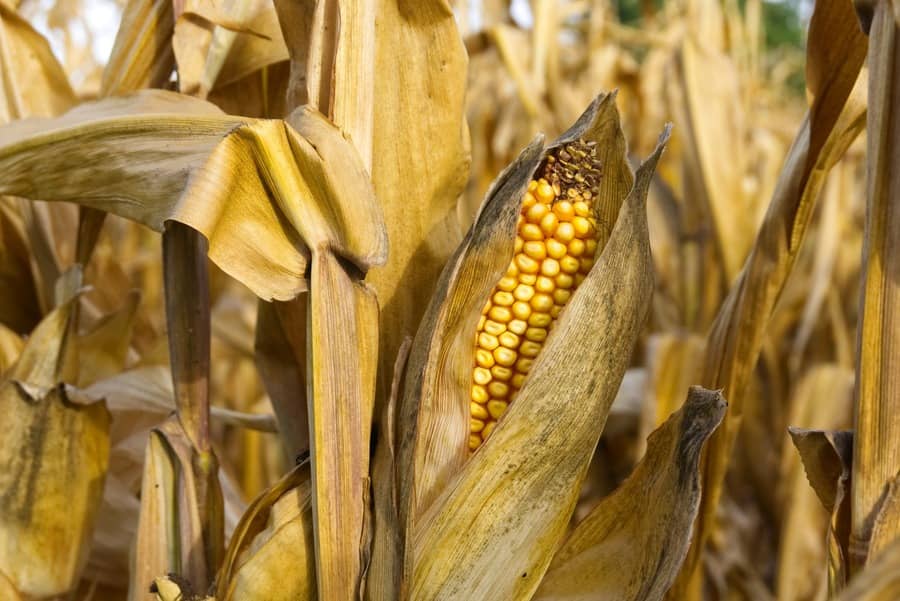Porto Alegre, April 2nd, 2024 – The bias for the 2024 US planted area was confirmed, that is, a cut in area in comparison to the 2023 volume. The projected area of 90 mln acres, however, cannot be considered bullish, as USDA has always worked with high initial productivity projections in its first report in May. However, given the level of the estimated area, the market will work more intensely to pay attention to the weather, which will begin to positively or negatively influence prices from this week, with forecasts for planting to begin on April 20. Basically, if the weather advances well, prices will go down; if it has some problematic variable, prices will go up. Attention to the climate now turns to the US crop.
The Planting Intention report, traditionally released at the end of March, confirmed the bias toward cutting the area to be planted in the United States in this 2024 corn crop. In 2023, the area was 94.6 mln acres, the third-largest in history. This large area enabled the record output of 390 mln tons and a full recovery of final stocks to 55 mln tons, the highest since 2018. The consequence reached prices. The levels on the Chicago Board of Trade (CBOT), which reached up to USD 8.00/bushel amid the pandemic and production losses, still maintained numbers well above the average in 2023, at USD 5.00 to 6.00 a bushel. With stockpiles recovered, prices returned to around USD 4.00/5.00, still slightly above average.
As we have assessed in our newsletters, this decline in corn prices generated an exchange ratio of 2.7 bushels of corn for 1 bushel of soybeans this year. A high exchange ratio that favors soybeans. Therefore, the Planting Intentions brought a cut in the corn area to 90 mln acres and an expansion of soybeans to 86.5 mln acres. The surprise was an increase in the area to be planted with spring wheat, which was expected to be lowered. This projected area will have its first review on June 30, after the planting, and may or may not fully confirm this expectation.
This area is a little smaller than market expectations, however, it does not become fully bullish. This is because USDA will release the first supply and demand picture for the 24/25 business year on May 10. In the first report of the business year, to calculate estimated production, USDA has used a high initial productivity, of around 182 bushels/acre. Normally, when the planted area is cut, a higher average productivity is projected, and this is what USDA does. So, the smaller area will not necessarily bring a bullish effect. The production projection could reach nearly 380 mln tons, compared to 390 mln in 2023. We must remember that in 2023, with a strong drought in Iowa and Illinois, the two main growers, productivity hit 177.3 bushels/acre, a new record. With normal weather, could productivity set a new record?
From now on, the focus will be on the pre-planting weather. A good rate of planting will bring prices down again on the CBOT; any delay or irregularity could boost prices. The expectation for the first half of April is above-normal rainfall in the Midwest. For May, the period with the highest planting volume, rainfall is within normal limits throughout the region. There was no harsh winter to bring about a strong thaw at the beginning of spring and a consequent delay in planting. However, excessive rainfall is always a problem in the Midwest during the planting. This does not appear to be the case in 2024. Anyway, from now on we will focus on the climate item.
We must reflect that in 2023 the international corn market had strong difficulties with shipments from Ukraine, adjusted Chinese stocks, low US stocks, a historic crop failure in the Argentine crop, and prices on the CBOT between USD 5 and 6/bushel. In 2024, the picture is quite different. Ukraine is exporting better, China is coping with a strong decline in domestic prices, the USA has fully recovered stocks, and Argentina is producing a record crop. There is no problem with demand, but much more supply, which rebalances prices closer to the historical average.
Meanwhile, Argentina will have favorable conditions to advance the harvest in April and boost exports. The climate forecast is good, and Argentina already has commitments involving close to 20 mln tons of exports. While Brazil is unable to find its way to exports in this first half of the year.
Copyright 2024 – Grupo CMA

